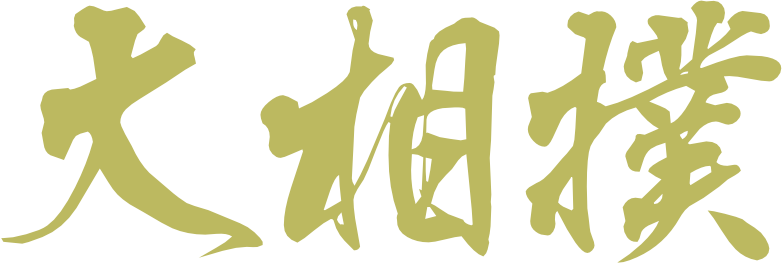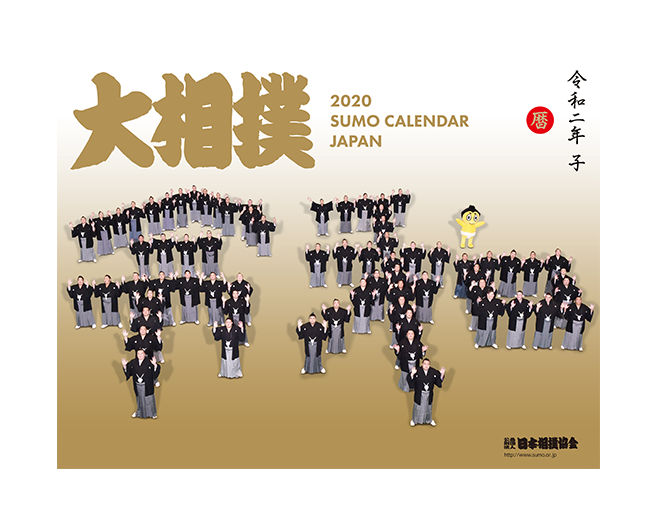Get your Japanese Souvenir here
Is this JUST a calendar? No. This is a collectable piece of art that is beautifully crafted to perfection and carries with it all of the culture that sumo as a sport represents. In addition to this, if you choose you can purchase two clear files to complete the set.
2020
-
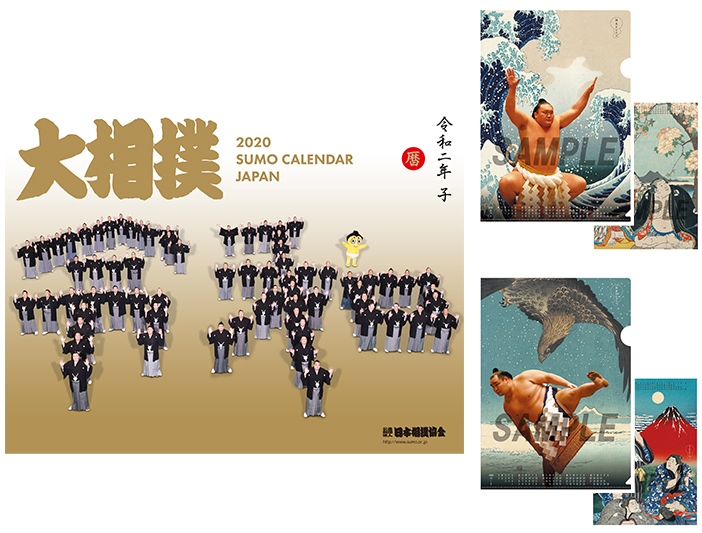 SET - A
SET - A- 1 Official Calendar (Size A3)
- 1 Clear file (Rikishi - Hakuho)
- 1 Clear file (Rikishi - Kakuryu)
FREE International Standard ShippingBuy more than $40, Get 15% OFF
Use RNH9XH630RQZ at CheckoutBuy more than $65, Get 20% OFF
Use MCKWY676PTTB at Checkout39.00USDBy clicking the button you confirm that you accept the Privacy Policy applicable to this website. -
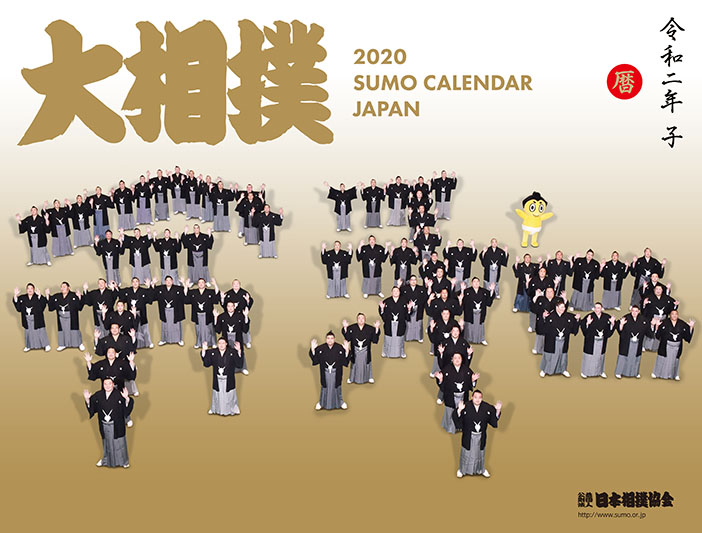 SET - B
SET - B- 1 Official Calendar (Size A3)
FREE International Standard ShippingBuy more than $40, Get 15% OFF
Use RNH9XH630RQZ at CheckoutBuy more than $65, Get 20% OFF
Use MCKWY676PTTB at Checkout32.00USDBy clicking the button you confirm that you accept the Privacy Policy applicable to this website.
2019
-
 SET - A
SET - A- 1 Wall Calendar (Size A3)
- 1 Desk Calendar (Size B5)
FREE International Standard Shipping40USDBy clicking the button you confirm that you accept the Privacy Policy applicable to this website. -
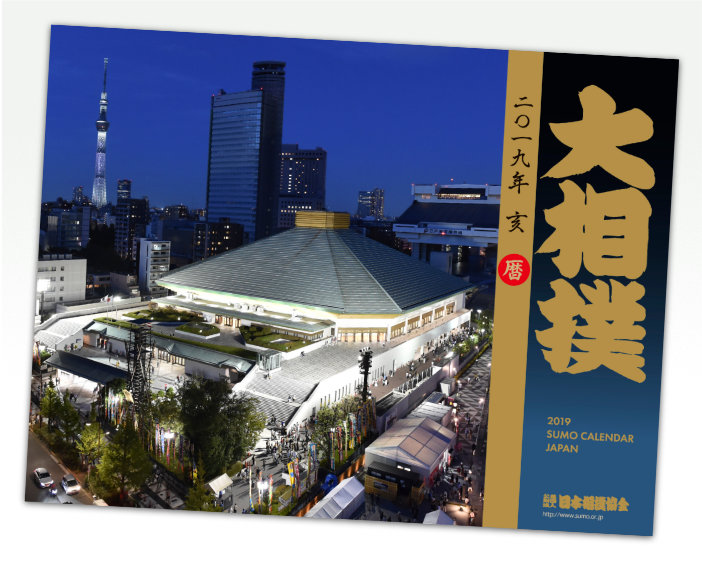 SET - B
SET - B- 1 Wall Calendar (Size A3)
FREE International Standard Shipping30USDBy clicking the button you confirm that you accept the Privacy Policy applicable to this website.
Customer Reviews
History of Sumo
Today everyone is familiar with the word "Sumo wrestling" but very few people know how this traditional martial arts form came to be. The exact details of the origin of this sport is unclear, but most historians agree that the modern version of the sport originated in the "Edo" period (1603 to 1868) – an era of peace and stability in the turbulent history of Japan.
This national sport of Japan is said to be built around a tradition of praying for a good harvest of crops. When it was time to plant the crop (mostly rice) sumo exhibitions were conducted in order to predict the year's harvest and pray for bountiful harvests. This tradition gradually evolved into an event that used to be conducted for the emperor's entertainment. Once it caught on with the public, regular exhibitions were conducted for the people with money from these events going towards constructing various temples and shrines. As the popularity of the extension:liximomo.sftpsport grew, the organizers started putting in place rules and regulations which are followed even to this day.
The reason Sumo wrestling is so famous among the Japanese people is because it is a true reflection of Japanese culture, the vibrant colored traditional dresses, top knots and ancient customs.
Sumo Today
Sumo today is no longer considered a sport but a way of life. The Rikishi's (wrestlers) train in a "heya" which roughly translates to "stable" in English. These heyas are set up and run by "elders" who are typically retired wrestlers. Rikishi's are attached to one heya throughout their career where they live and train, their training as well as other aspects of their lives are strictly controlled by stable masters bringing in a discipline into this sport which is rare to find in any other. One can even get a glimpse of this fascinating lifestyle by visiting the stables, a hand full of stables allow tourists to visit.
Tournaments
Each year there are six tournaments organized by the sumo association of Japan. Each tournament lasts a total of 15 days and they are held all across Japan. There are three tournaments held in Tokyo with one in Osaka, Nagoya and Fukuoka respectively. The tournaments are held division wise with the junior wrestlers going first and the senior most going towards the end. After each tournament the rankings are updated based on the wrestlers performance and the rank of yokozuna being given to the grand champion.
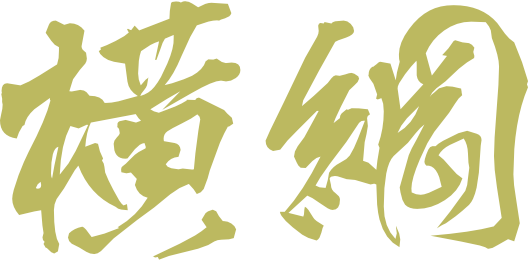
Yokozunas
At the top of the hierarchy of sumo wrestling sits the Yokozuna. They are highly respected in the sumo world and are expected to lead by example. They are a true testament to the phrase "with great power comes great responsibility" as Yokozuna Kisenosato was promoted to Yokozuna status last year making him the first Japanese born Yokozuna in almost two decades giving the sport a huge boost in the country showing that the actions of the yokozuna hugely influence the sport.
Yokozuna Kakuryū Rikisaburō
- Nationality - Mongolia
- Born - August 10, 1985
- Promoted - 2014
- Status - Active
His father was a university professor and he grew up dreaming of professional basketball, not sumo. At age 14, he decided to devote himself to sumo. He has won several awards for his technique and is considered by many to have a great work ethic

Yokozuna Hakuhō Shō
- Nationality - Mongolia
- Born - March 11, 1985
- Promoted - 2007
- Status - Active
Hakuhō belongs to a family in the Mongolian wrestling tradition. He made his official debut in March 2001. He holds the record for the most undefeated tournament championships - thirteen at a stretch, which is five more than any other sumo wrestler in history.
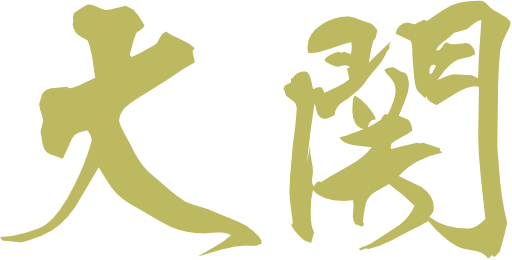
Ozekis
The Ozeki is immediately below yokozuna in the ranking system and sumo’s second-highest rank. An ozeki needs to win back-to-back championships or display an equivalent performance to be considered for promotion to yokozuna.

Ōzeki Tochinoshin
- Nationality – Georgia
- Born – October 13, 1987
- Promoted – July, 2018
- Status – Active
When Tochinoshin suffered an anterior cruciate ligament injury on July 2013, he missed the following three tournaments in that year which demoted him from the maegashira ranks to the makushita division. However, on March 2014, he returned to take two astounding 7-0 scores consecutively in makushita 55 and makushita 6. Since then, Tochinoshin has continued to climb up the ranks, proving himself rightful to be an Ōzeki.

Ōzeki Takayasu
- Nationality – Japanese
- Born – February 28, 1990
- Promoted – July, 2017
- Status – Active
Takayasu was a catcher for his junior high school baseball team and expected to play for his high school team as well. But with his father’s encouragement and guidance, he decided to take up sumo after graduating from junior high school. Takayasu debuted in 2005 and reached the top makuuchi division by 2011, making him the first wrestler born in the Heisei era to do so.

Ōzeki Goeido
- Nationality – Mongolia
- Born - April 6, 1986
- Promoted – September, 2014
- Status – Active
Gōeidō started sumo in his first year of primary school and was known as a strong contender. However, going into junior high school, he was demoralized by his relatively light weight compared to his associates. His decision to attend Sakami Sakae High School was his turning point, as he went on to win 11 national titles in high school with the help of a supportive coach and his own determination. Gōeidō, long considered as one of the most promising Japanese wrestlers, holds the record for the most consecutive appearances in sekiwake, sumo’s third highest rank at 14 tournaments.
Sumo Association
The sumo association of Japan, the governing body of Sumo wrestling falls under the jurisdiction of Japanese ministry of Education, Culture, Sports, Science and technology. Joining the association is no easy task, people looking to become members of the association must first satisfy all the pre determined application requirements before being eligible for membership. Membership is either inherited or obtained by buying one of the 105 available shares. The only exception to this rule is when the most successful former yokozuna is offered a one-time membership. Each of the members is given a role and are expected to help in running the association including taking up directorial roles in various departments. These members are the only ones who are allowed to train new sumo wrestlers at their heyas. The association apart from regulating the sport carries on various activities to promote the sport including creating merchandise such as the Sumo calendar.
